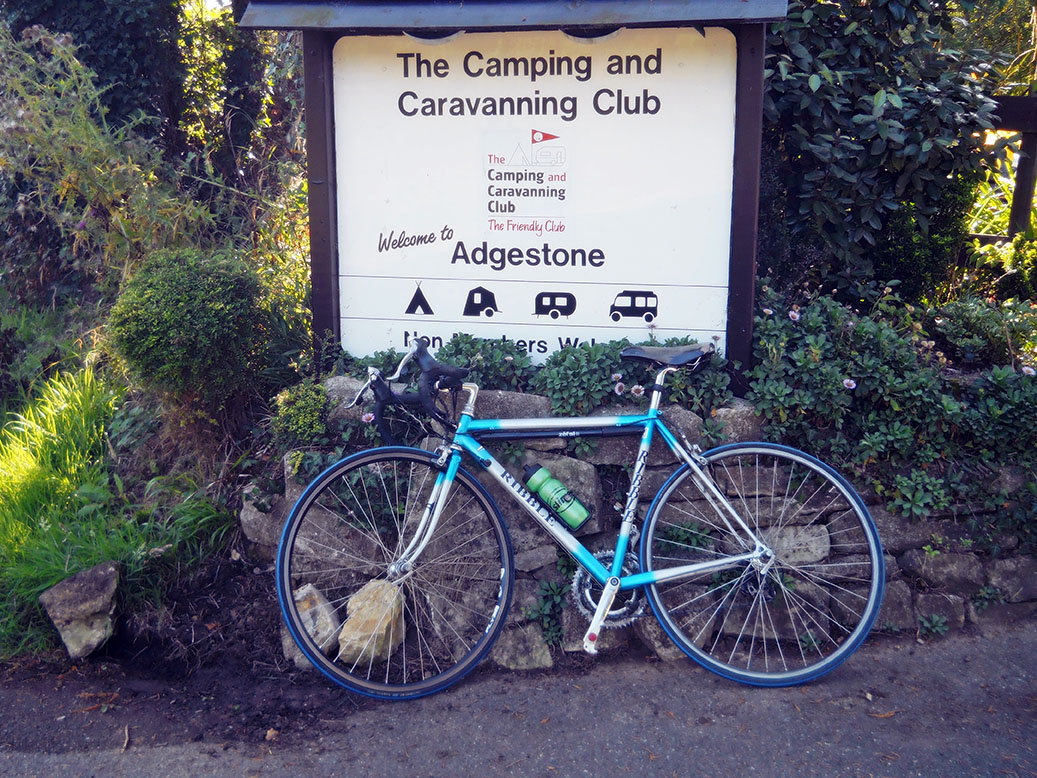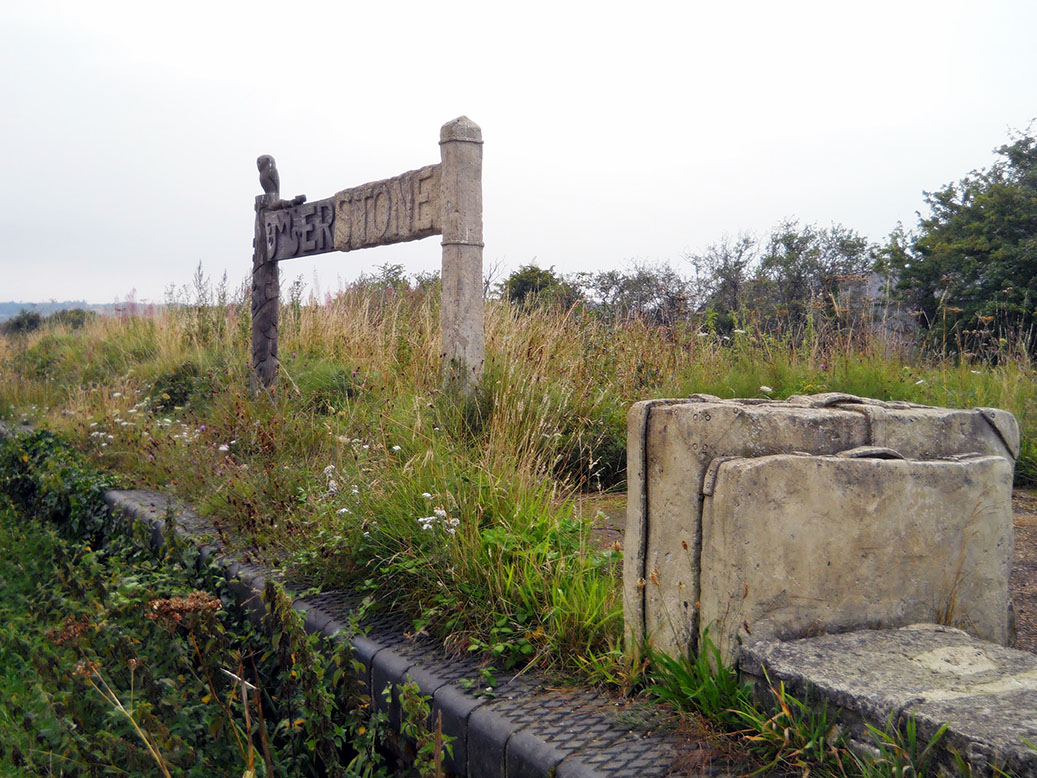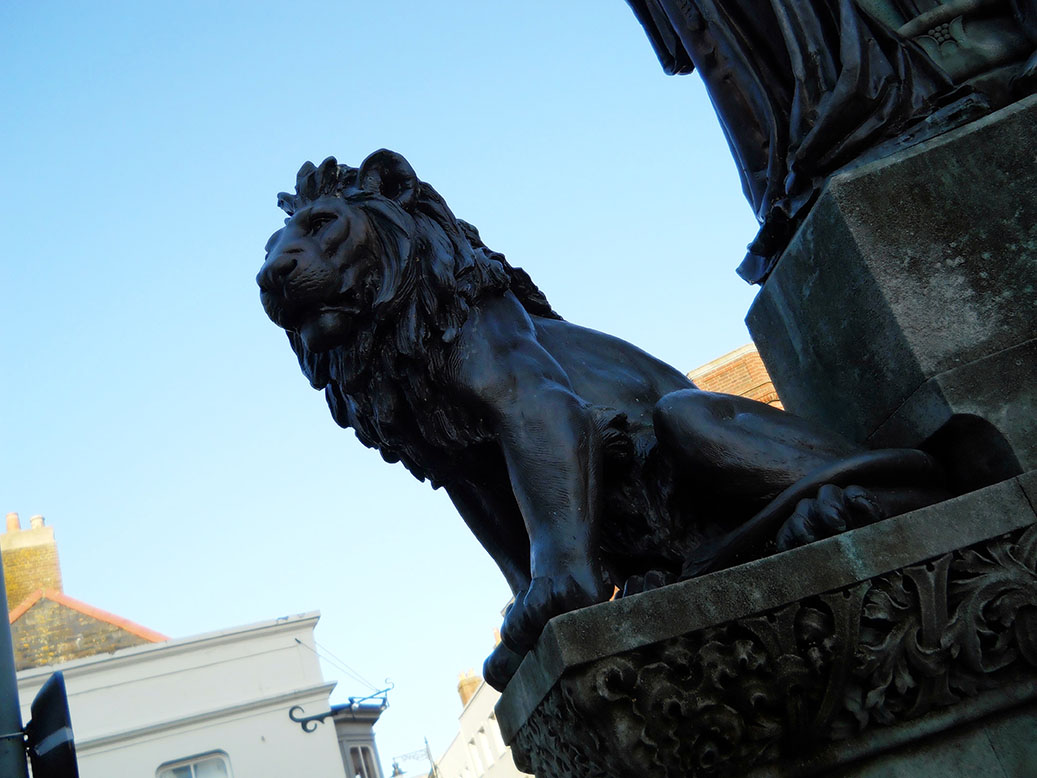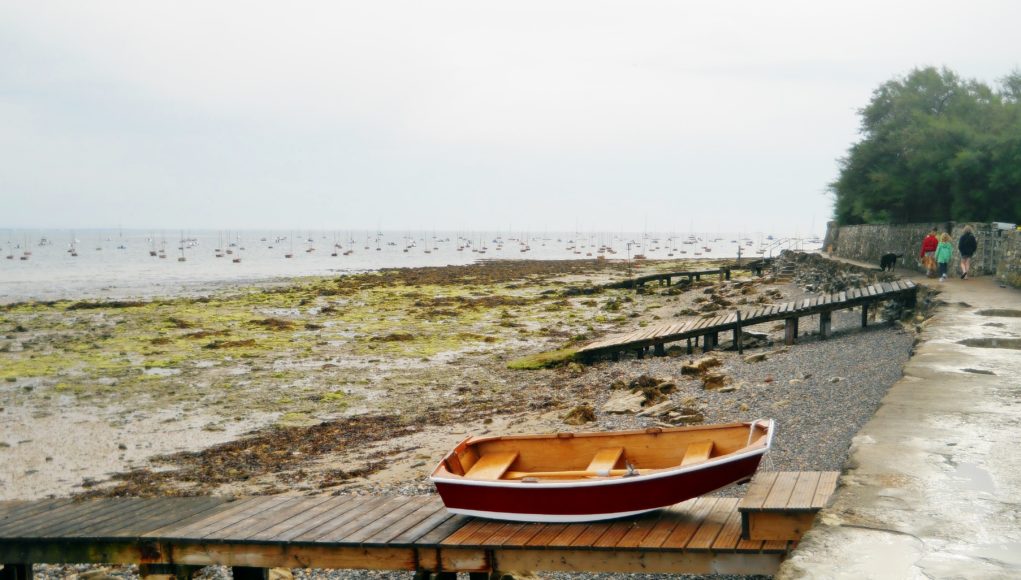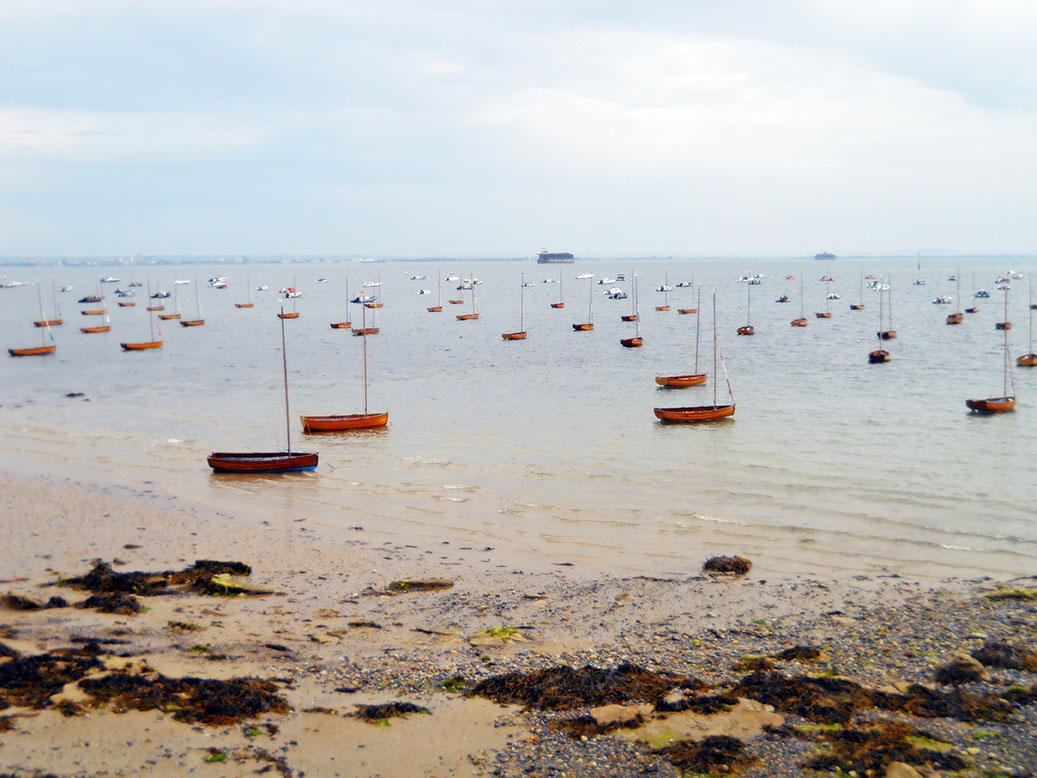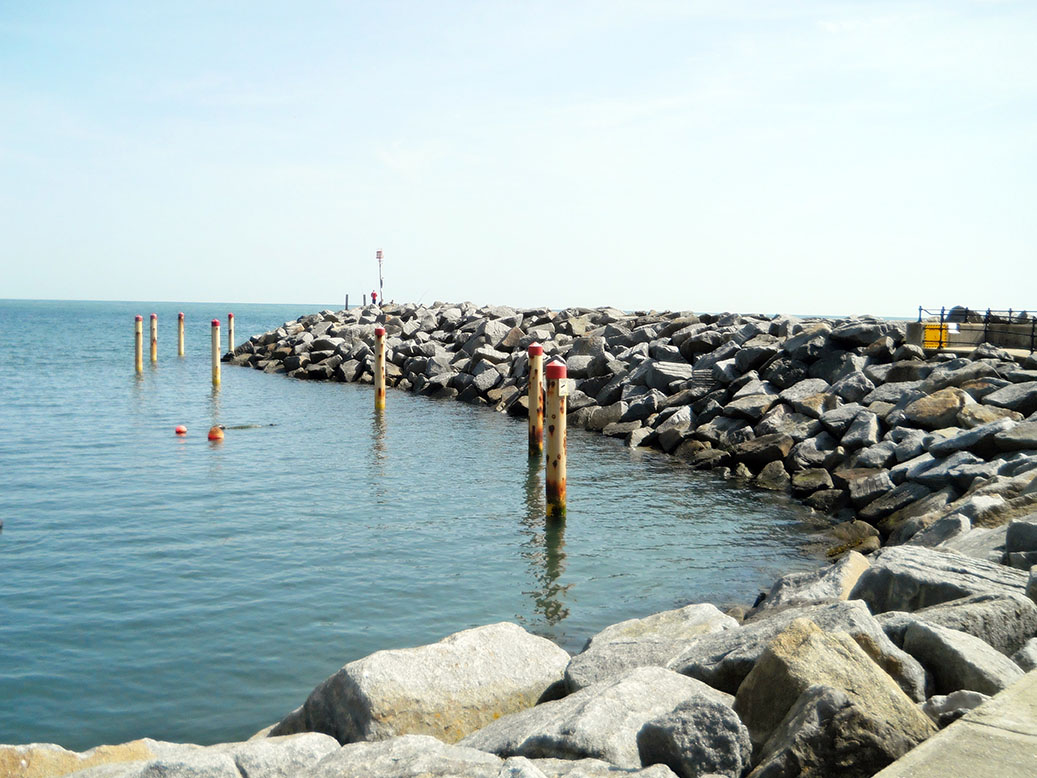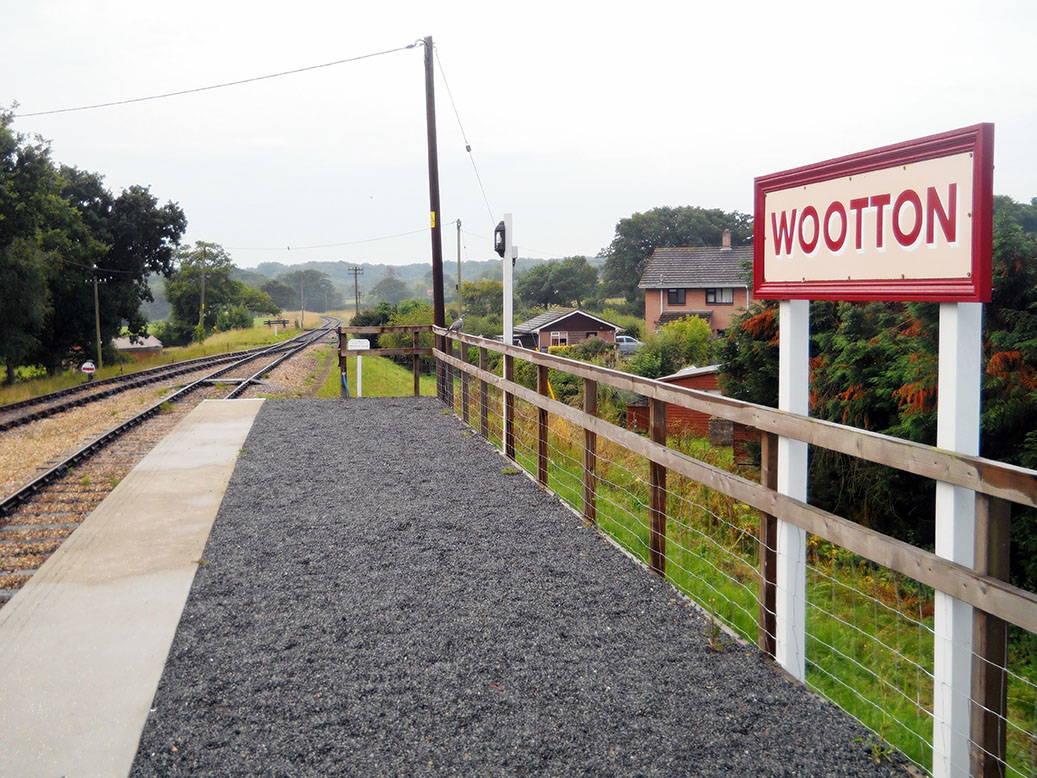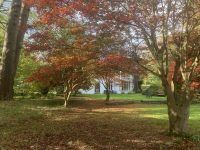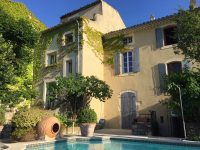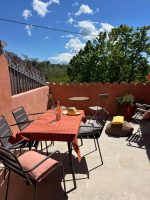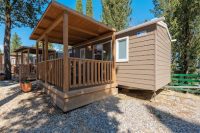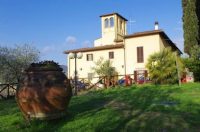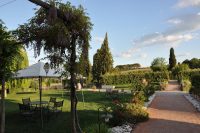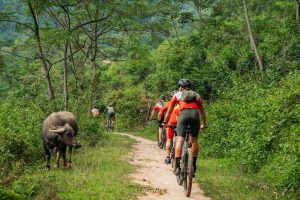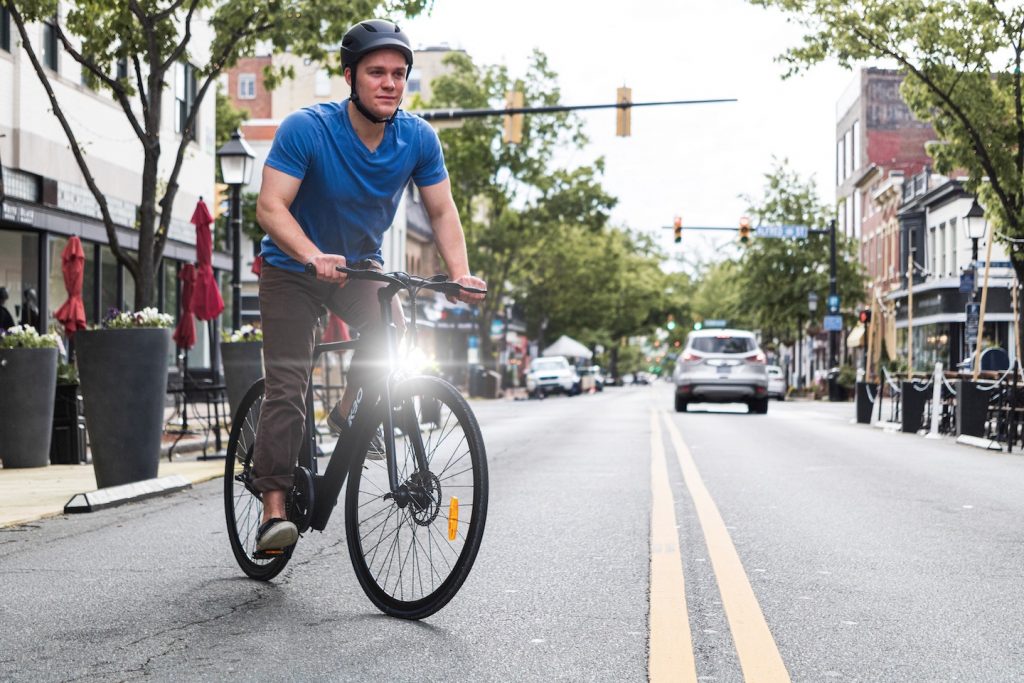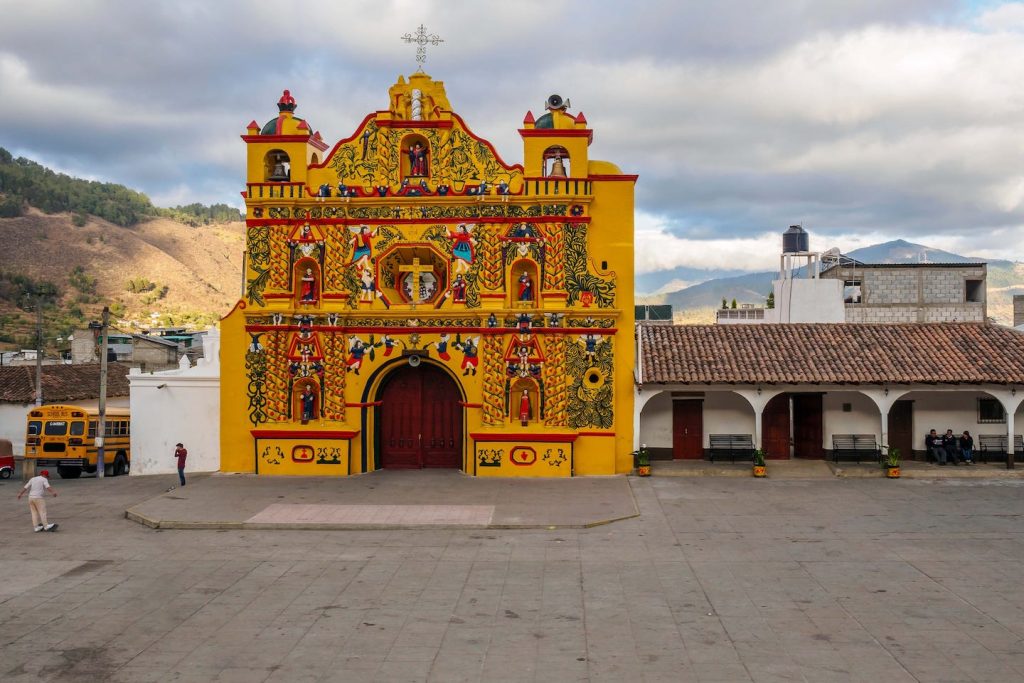Once again, I am holidaying somewhere familiar. I wouldn’t like to think of myself as a completely predictable pack driven individual but from past experiences, it’s apparent I like certain things and places (and sweets!!), and the Isle of Wight is obviously one! My last visit, only twelve months earlier, involved an enjoyably arduous day trek circumnavigating the Island as part of my ‘Round Britain Ride’. On that occasion the weather was expectedly unpredictable and my immersion brief, but this time round I was here for a considerably longer period with the hope of experiencing as much of what this holiday Island has on offer to cyclists, as well as families. Joining me, were (as usual at this time of the year), an array of little people (that includes Sarah) and our ageing but always dependable trailer tent.
The Isle of Wight has a certain mysterious appeal, the ferry ride makes you feel you have travelled further than you actually have, everywhere seemingly distant on the map but in reality the Island is comfortably small and manageable, especially on two wheels. Our base was the small hamlet of Adgestone, inland from the sea at Sandown on the east side of the Island. The campsite was set in a peaceful enclave of greenery and mooing. The location, deep in the designated ‘Quiet Area’ only added to the blissful tranquillity.
I woke typically early, through a gap in the canvas I could just make out the sun peeping energetically from its slumber, the tantalising prospect of some quality cycling was all that was required for me to exit the tent partially clothed. The plan was to jump on the nearby cycleway which connects Sandown with Newport some 8 miles northwest. The route follows an old railway line, the island is dissected by a plethora of these wonderful cycle paths and trails which are well maintained and mostly deserted. This section is all off road apart from the occasion when the rider has to negotiate the quiet country lanes that cross the old railway line. A soon as I had entered the trail via Longwood Lane I was immediately transported to a glorious bucolic environment provided by a blossoming Nature Reserve.
Alvestone Mead consists of 25 hectares of mixed habitats including wet meadows, woodland and wild flower meadows. It is home to a remarkable array of flora and fauna, especially dragonflies and red squirrels. This morning the whole area was exhibiting a melancholy persona due to the low lying mist. It brought to mind the graphic description of the marshes from the novel ‘Great Expectations’. The temperature was still comfortable and as I continued, the ghostly mist lifted to present a stirring landscape dominated by luscious greenery which appeared to slowly close in on all sides, naively protecting me from the unknown. This section of the route takes you through (actually it sidesteps) the lovely quaint villages of Alvestone, Horringford, and Arreton (where it crosses a busy ‘A’ road) before encountering Merstone, and finally ending in the county town of Newport.
Only remnants of the original Merstone Station still remain today, it was unfortunately closed for good in 1956. Nowadays the platform is partially obstructed by an overgrowth of brambles and long grass but there are signs of its past, a strategically placed stone carving of two suitcases sits uncomfortably on the platform, emitting a forlorn image, discarded in a similar fashion to the Station. All was silent but for the whisper of the gentle wind in the nearby trees. From Merstone, the cycle route takes on the guise of the ‘Troll Trail’ and is home to some lovely ornate sculptures, it was the brainchild of ‘Gift to Nature’, a flagship conservation project of the Island 2000 Trust. The project is passionate about the Isle of Wight’s wildlife and has had input into a variety of conservation sites on the Island. At various points along this stretch sit information boards explaining the route and what could be seen, dependant on time of year and/or weather conditions.
Newport was quiet but it was still early. My coffee stop was predictably the busiest place in the town, as usual it adequately satisfied my demands for an early morning caffeine fix. Re-energised I decided to leave the delights of Newport for another day and continued north, Cowes was on my radar. Thankfully I had discovered a signed route (route 23) which gracefully followed the River Medina into the western part of the town.
Cowes is without doubt the most famous sailing destination in the World and dates from Tudor times. The town is spilt into West and East Cowes and is separated by the beautiful River Medina, both offer completely different things. The western part is acknowledged as having best shopping and a splendid harbour and the eastern section has a more timeless feel with its historic connections, courtesy of Osbourne House. The town comes to life during Cowes Week (the regatta is approaching its 200th anniversary) when its bursting at the seams with smartly dressed sailors and party revellers a plenty. It takes place at the beginning of August each year and plays host to 40 daily races with up to 1,000 boats and 8,500 competitors involved. I halted near the harbour and wandered happily through narrow attractive streets, vibrantly decorated with colourful nautical bunting still advertising the world famous sailing event. I stopped briefly for a drink and attentively watched the animated baristas expertly create all types of expresso style coffees, before continuing my stroll through the snake like streets. The overall experience was one of extreme maritime pleasure, not for the first time I felt like I had stumbled into the pages of a Dickens novel. The climb out of town was hard work, I relocated the cycleway and pedalled back towards Newport. I was surprised to now find the route slightly congested, occupied by all manner of cyclists and the odd jogger, actually I had probably hit rush hour. The riding was uncomplicated, the setting idyllic all the way to Newport.
Newport had also become slightly congested with motor vehicles and people, I had noticed early in the day several signs pointed the way to Carisbrooke Castle so I decided to take an impromptu detour. The castle is located a short distance from main part of the town, surprisingly close to a substantial residential area. Carisbrooke Castle is steeped in an intriguing history, it’s been lived in since before the Norman conquest. It’s had an amazing past, predominately used as a fortress protecting England from invasion but recently it was used as a home and is now owned by English Heritage. The experience offers something for everyone, the lovely chapel of St Nicholas is small and stunningly beautiful and was re-built to mark the 250th anniversary of Charles I death in 1649. I also enjoyed the Great Hall and Museum, especially the reconstruction of the bedroom of Charles I and the lofty heights of the Wall Walk and the Shell Keep. It has some lovely hands on interactive displays especially in the atmospheric museum which only enhanced the whole experience, enabling the visitor to immerse in the colourful history of the castle. But the most bizarre of discoveries involved the Carisbrooke Donkeys who appeared happy to demonstrate the method used by their 17th Century ancestors to obtain water from the well. I found my time in the castle fascinating with the endless smorgasbord of historical resonance and all-round fun.
I had opted to steer away from the cycleway en-route to base, preferring the more established A3056. The road was busy but not uncomfortable and it allowed me to explore the Adgestone Vineyard which is set inconspicuously amidst the rolling countryside. The secluded vineyard claims to be the oldest in Britain, its small in size, only consisting of 10 acres overlooked by the beautiful Brading Down and is believed to be the very site where the Romans spotted the potential of the areas fertile soil and planted their vines thousands of years earlier. The complex offers plenty of things to do, including cellar visits, tours of the vines and tasting sessions. The gift shop is lovely, stocked full of Island produce, including its own labelled marmalades and preserves, chilli sauces and not forgetting the award winning wines. The café is great place to relax and enjoy the homemade delights in warm welcoming surroundings. My exploration was brief and after only a few revolutions I was stood in the campsite shop awaiting some freshly baked croissants whilst discussing the usual topic of weather and football.
The weather was again glorious as I emerged from my canvas cave. The sea air blasted away any early morning cobwebs. Today’s plan was to head in the direction of Newport and then through Wootton Bridge enroute to Ryde. I followed the enticing cycleway once more, it was even more stunning this morning, enhanced by the newly awoken rays of the sun. I was shocked on checking my watch as I entered the outskirts of Newport, it was much earlier than I expected. The town was fairly quiet, the odd bus or jogger my only company. As I stopped by an ornate statue in the heart of the commercial area, I could actually hear the roar from the expertly carved lions. I contentedly wandered, making a mental note of the standard and type of shops on offer. The town has a dramatic setting placed at the head of the navigable section of the River Medina which eventually flows into the Solent. After an brief investigative foray, I jumped back on the bike and continued on following the signs to Ryde.
Next stop was Wootton Bridge which attracts plenty of visitors because of its connection to the Island’s Steam Railway. It was on my route so I decided to pay a visit. I followed yet another section of cycleway which conveniently transported me to directly opposite the Station entrance. The carpark was deserted and likewise the platform, it was still too early for the dedicated volunteers. I wandered around the vibrantly decorated facades of the station buildings sat proudly awaiting the first train of the day. It reminded me so much of the layout of my father’s train-set in his spare bedroom but obviously giant sized! Wootton Bridge is located at the western end of the line which is normally bubbling with a cacophony of noise. The Isle of Wight Steam Railway is recognised as an award winning attraction and definitely one of the gems of the Island. It possess a lovely effervescent charm and offers endless thrills. The 5 mile route runs through the stunning unspoilt countryside between three stations, Wootton Bridge which is a fairly quiet spot, Haven Street which is the heart of the railway and Smallbrook Junction which is at the interchange with the Island line run by Southwest trains. It allows the visitor to settle back and relish the evocative surroundings of the Victorian and Georgian carriages and experience a wonderful bygone era of steam and simple decadence.
A short distance from Wootton, I stumbled on a brown sign for Quarr Abbey, I was intrigued. What I discovered concealed behind some luxuriant towering greenery was a lovely Benedictine Monastery, I was surprised by its close proximity to the tourist trappings of Ryde. It’s home to a community of monks who have chosen to dedicate their life to prayer, contemplation and community life. I pedalled down the driveway and became distracted by a sign pointing to the ruins (which are supposed to be of the original building). Inquisitively I chose to investigate, what I discovered was far from ruinous. The property was either in stages of construction or destruction but it definitely appeared lived in. The abbey was founded in 1132 but the annoying Henry VIII dissolved it more than 400 years later. The buildings bizarre architecture resonates a definite Moorish feel, more Marrakesh medina than Ryde trunk road.
A matter of ten minutes later I was stood by the windswept pier in Ryde. The structure produced a sombre figure full of chugging cars making their way to the ferry and ultimately the mainland. I liked the town which provoked a temporary mild confusion, as my previous experience left me feeling deflated, with bland drab memories, so in contrast todays experience was a wonderful surprise. The streets were clean, the locals friendly and the shop windows enticing with vibrant displays offering all types of goods and products. It seeped a glorious underbelly of splendour. The town grew in prominence in the Georgian period, originally it was two small communities of Lower Ryde and Upper Ryde. In the late 18th century the town developed and once Queen Victoria adopted the nearby Osbourne House as one of her summer residences then its fate was secured. It’s definitely benefited from its commercial prosperity, independent shops were happily brimming with customers. The whole town was bursting with a self-confident air. One thing it made me realise was I need to banish any pre-conceptions because they can have a detrimental effect on your holiday plans. I must learn!
I pedalled happily east along the promenade, stopping briefly by Appleby Tower. The building is a feast of circular and castellated construction enhanced architecturally by a dramatic turret and oriel, superbly indulgent but unfortunately it looked quite lonely stood proudly overlooking the sea and its modern counterpart, the Spinnaker Tower in Portsmouth. It was originally built in 1875 as part of a substantial country house which unfortunately no longer exists. Its setting so close to the beach and the loving verdant embrace of Appleby Park provides a gentler more timeless appeal to that of the main town. The switch of emphasis from the hectic to the placid was a pleasurable diversion.
I continued along the coast towards Seaview. The surrounds became more remote, the route was not as well established, with sharp blind corners and uneven surfaces. The views were gallery quality as I approached the comforting confines of Seaview. The Edwardian village is regarded as one of the most affluent places to live on the island and the main Pier Road has rightly been given the nickname ‘Millionaires Avenue’. I had read that this sweep of coastline is a great location to go crabbing or shrimping, mainly due to its many rock pools, however this morning the town was distracted by more important matters. The seafront was bustling with locals draped in nautical paraphernalia, preparing for the annual regatta. Stalls in different stages of construction, cardboard boxes and colourful bunting strewn across the roadway and pavement with a hint of freshly brewed coffee, a wonderfully controlled chaos. I weaved my way through the crowds and began a gradual climb away from the water.
I was heading towards Brading and its Roman Villa. Inconspicuous by its appearance and location, the Roman Villa is a great tourist attraction on the outskirts of the town. The site was discovered in 1879 by a local farmer and the original building dates way back to the 1st Century. It is recognised as one of the finest Roman sites in the UK. Its modern exterior doesn’t prepare the visitor for the archaeological delights within; the highlight is the delicate and intricate preserved mosaic floors. The simple naive images bubble with a vibrancy, the experience is amazing, providing a brief tantalising glimpse into what life was like in the area at the time with plenty of exhibits focusing on the Romans lifestyle and beliefs. On reflection it reminded me of other ruins I had visited in Barcelona and Bath and I was enthused by the efforts they made to cater for children, thankfully dressing up was optional for the adults.
Today was going to be glorious, I had a feeling. Firstly I was greeted by the absolutely stunning elevated view of Sandown Pier as the sun awoke. I zigzagged myself down the winding cliff top road onto the promenade, where I found the seafront bustling with a riot of OAP’s enjoying the early morning sea air, now slightly tinged with the aroma of Fishermen Friends. I pedalled south towards Shanklin. The distance between the two is minimal but there is definitely something distinctively different about the resorts. Sandown appears more naïve, more basic, in a positive way, whereas Shanklin exudes a simple modernity, it’s hard to explain but the comparison is obvious. I stopped on the seafront for some refreshment and with my coffee urge satisfied, I unfurled my map and set off towards Godshill and its quaint picture postcard surroundings. I passed the lift which is on hand to transport any lethargic types from the seafront (to be honest there is a substantial climb back up to the main commercial area so for most it offers a convenient alternative to sore feet and raised heartbeats) and arrived in Shanklin’s main shopping area which is slightly dated but in a wonderful way. I especially liked the slapdash approach to the usual offerings from the endless souvenir shops, brimming with infectious optimism and seaside tat. They blend well with occasional antique shop or vintage store overflowing with vibrantly painted pastel colours depicting some lovely local landscapes. It’s a place that gives you a massive comforting hug whilst patting your back rather enthusiastically, and all this mixed with the soothing hint of sea air.
The route took me through some stirring countryside, at times there was not much sign of civilisation, only the sporadic tractor or 4X4, it was blissfully tranquil. I found some remote dusty gravel tracks with some breathtaking views, unfortunately my impromptu escapade resulted in some rather painful nettle sting to my exposed ankles. The bumpy track deteriorated into a mass of rocks and sand, and as the landscape unfolded into a glorious open expanse, suddenly by chance I stumbled on Godshill. The village consists of a scattering of quaint cottages arranged expertly to create a twee picture postcard setting but unfortunately it’s been touched by the heavy hand of progress and globalisation. However, I did enjoy the aesthetic Cotswold appeal but on a summers day, I can only imagine the streets packed full of polluting coaches overflowing with snappy happy tourists. My stay was brief, with a whimsical glance towards the Model Village I focused on the south coast and Ventnor. Many fine views followed as I made my way tentatively into Ventnor. The adrenalin was flowing as I descended at speed into the heart of the pleasant town.
Unfortunately, a feeling of desolation hung over me as I had to accept that a rather substantial climb awaited me on departure.The harbour is the main focus of the town, it reminded me of a stereotypical US harbour scene, similar to the one featured in Jaws. Shaped by large boulders, the extensive prospect creates a welcoming and attractive setting to discover the sea, oozing an inescapable romance. The seafront and promenade possess similar qualities, I especially enjoyed the novel design of the paddling pool conveniently sited by a bustling restaurant. It’s a lovely scaled down model of the whole island including geographical contours and craggy outcrops. I stopped for some refreshment, amongst people happily lingered over cappuccino’s and fries before wandering up to the main shopping area with its winding streets and intricate narrow alleyways. The town was busy so I relocated my bike and began my arduous climb north back towards Shanklin, and ultimately my canvas base. I would like to briefly mention the delights of the western side of the Island, which if you are feeling adventurous would make a nice easy day ride from Sandown. Yarmouth has a lovely Castle and quaint narrow streets and atmospheric alleyways but I definitely recommend a trip to The Needles which has grasped progress firmly by the horns and is now home to a selection of rides and jolly stalls. The highlight is the chairlift ride down to the shoreline with its stunning views of the geographical phenomenon and untouched natural beauty of the coastline
My time in the magical place was a joy, its conveniently located just a short simple boat ride from the mainland across the Solent and benefits from a lovely temperate climate, warmed by the gulf stream. I discovered it was aptly named the ‘Garden Isle’ and is home to a stunning array of unusual plant life which flourish in the good weather and relish the fertile soil. With its many cycle routes and tourist sights, the Island is definitely one to discover. Trust me, you won’t be disappointed.
Twitter: cadencemag
Website: cadencemag.co.uk
Author, ‘Simple Words from the Saddle, Simply More Words from the Saddle & The Way of St James’
Twitter: @saddlescot




